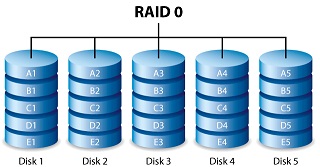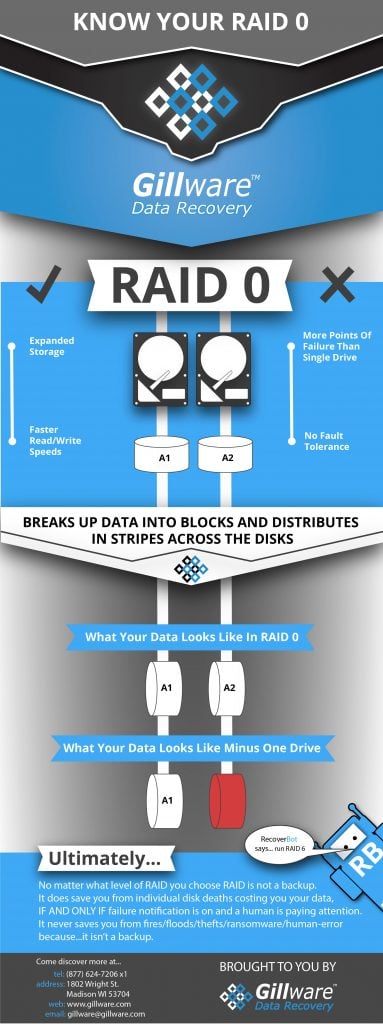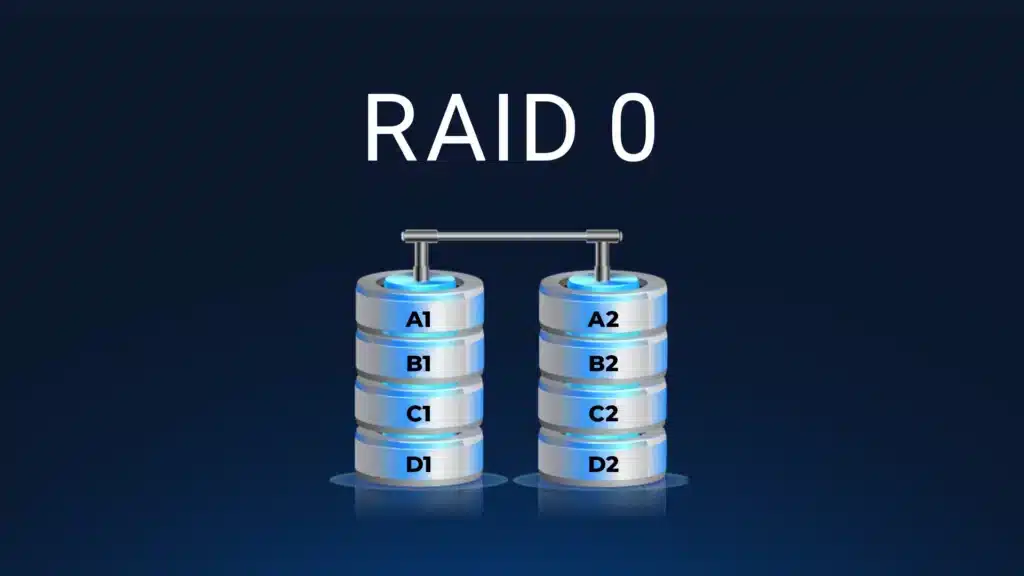The impact of RAID configurations on data recovery and fault tolerance varies significantly depending on the RAID level used:
- RAID 0 offers no fault tolerance because data is striped across drives without redundancy. If one drive fails, all data is lost, making recovery very difficult and often requiring specialized RAID recovery software to attempt data reconstruction.
- RAID 1 provides fault tolerance through mirroring, duplicating data on two or more drives. If one drive fails, data remains intact on the other(s), allowing seamless operation and easier recovery by replacing the failed drive. However, if multiple drives fail simultaneously, recovery becomes complex and may require professional RAID data recovery services.
- RAID 5 and RAID 6 use parity distributed across drives to allow recovery from one (RAID 5) or two (RAID 6) drive failures without data loss. This improves fault tolerance but adds complexity to recovery processes, as reconstructing data requires correct parity and configuration parameters.
- RAID 10 combines mirroring and striping, offering high fault tolerance and performance. It can tolerate multiple drive failures depending on which drives fail, but recovery requires careful reconstruction of both mirrored and striped sets.
Fault tolerance increases with RAID levels that incorporate redundancy (RAID 1, 5, 6, 10), reducing the risk of data loss from single or multiple drive failures. However, this also increases the complexity of data recovery, often necessitating professional RAID recovery tools or services that can automatically detect RAID parameters and reconstruct the array to retrieve data.
Key points on RAID recovery impact:
- RAID recovery is not just about recovering files but also about reconstructing the RAID configuration (stripe size, order, parity, etc.) before data can be accessed.
- DIY recovery attempts can cause irreversible damage; professional RAID recovery services are recommended to maximize success.
- RAID 0 recovery is the most challenging due to lack of redundancy, while RAID 1 recovery is simpler unless multiple drives fail.
- Complex nested RAID levels (e.g., RAID 50, RAID 60) require advanced recovery tools capable of handling multi-layer configurations.
In summary, RAID configurations with redundancy improve fault tolerance but complicate data recovery, requiring specialized knowledge and tools to restore data successfully after failures. Conversely, RAID levels without redundancy (like RAID 0) offer no fault tolerance and pose a high risk of total data loss upon drive failure.




















WebSeoSG offers the highest quality website traffic services in Singapore. We provide a variety of traffic services for our clients, including website traffic, desktop traffic, mobile traffic, Google traffic, search traffic, eCommerce traffic, YouTube traffic, and TikTok traffic. Our website boasts a 100% customer satisfaction rate, so you can confidently purchase large amounts of SEO traffic online. For just 40 SGD per month, you can immediately increase website traffic, improve SEO performance, and boost sales!
Having trouble choosing a traffic package? Contact us, and our staff will assist you.
Free consultation